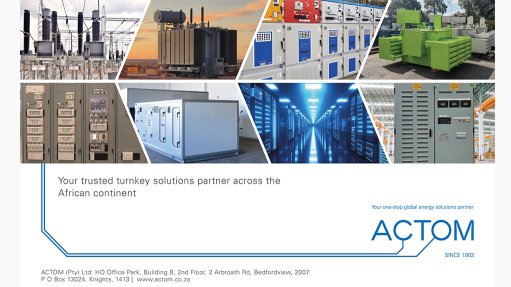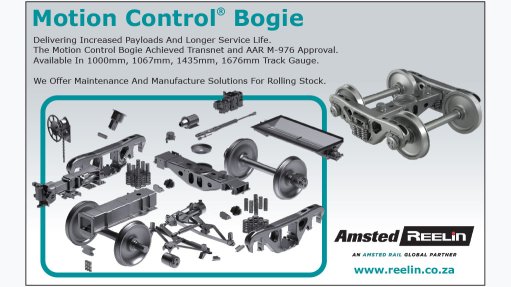Mobile laser cladding unit in final design stages
The Council for Scientific and Industrial Research’s (CSIR’s) National Laser Centre (NLC) is developing a mobile laser cladding system which, if all goes well, should be ready by the end of the year to service various industries, including the aerospace, defence, automotive and mining industries, says NLC laser- enabled manufacturing (LEM) manager Hansie Pretorius.
The mobile cladding system, which is in the final stages of design, will enable the NLC to repair large heavy components on site at mines or power stations, eliminating the need for the centre to transport components to the CSIR, in Pretoria, for repair.
“Many components used by certain sectors, such as mining, are quite large and weigh a few tons. This makes them difficult to handle and transport to the lab based at the CSIR,” explains Pretorius.
He adds that transporting large components can be costly and that the NLC has had to acquire the services of a rigging company to move certain components to the lab. “It sometimes costs the NLC more than R6 000 to transport a single component, which adds to overall service costs,” Pretorius tells Engineering News.
Industrial components in transit are also at risk of being damaged. Therefore, the mobile cladding unit will not only eliminate unnecessary transport costs but also the risk of damaging components, which further adds to the overall cost of repair.
Pretorius explains that the NLC LEM division has built a cladding system for Eskom, which the State-owned power utility uses to repair and refurbish tanks at its power stations.
He adds that Eskom is believed to have made extensive use of its custom-made cladding unit during its various shutdowns last year.
Laser Cladding Benefits
Pretorius believes laser cladding has strong potential for growth in South Africa’s laser industry, as the weld-surfacing technology repairs high-value components, such as shafts, turbines and superior-quality material components that would otherwise be costly to replace.
The process of laser cladding involves using a laser beam to deposit any weldable material on the surface of a metal substrate using a laser beam.
Pretorius explains that the weldable material, usually a powder, forms a 100% metallurgical bond with the component.
This implies that laser-cladded layers have superior-impact and fatigue properties to thermal-sprayed layers, where there is only a mechanical bond between the layer and the base material.
Laser cladding allows a worn component to be repaired according to its original speci- fication, which saves remanufacturing costs and time.
Pretorius adds that, depending on the component, its wear and corrosion resistance can be increased using a repair material with higher wear resistance. This not only increases the durability of the component but also its lifetime, resulting in a better component than the original.
Another advantage of laser cladding is its low-heat input process compared with other weld-overlay processes, which results in small heat-affected zones and minimal distortion.
The low-heat input also reduces the dilution of the applied layer on the substrate material, which means that, in instances where the substrate and coating have different compositions, the desired surface chemistry can be achieved in layers as thin as 1 mm.
This technique can be used on new and worn products and is typically used to weld rebuilt, worn or damaged surfaces, hard-face wear-susceptible materials and clad surfaces susceptible to corrosion, oxidation or wear.
“Laser cladding is a flexible technique, as it is able to use either powder or wire as welding consumables, which ensures that required chemical compositions that are not available in wire format can be made by mixing powders together,” notes Pretorius.
Article Enquiry
Email Article
Save Article
Feedback
To advertise email advertising@creamermedia.co.za or click here
Comments
Press Office
Announcements
What's On
Subscribe to improve your user experience...
Option 1 (equivalent of R125 a month):
Receive a weekly copy of Creamer Media's Engineering News & Mining Weekly magazine
(print copy for those in South Africa and e-magazine for those outside of South Africa)
Receive daily email newsletters
Access to full search results
Access archive of magazine back copies
Access to Projects in Progress
Access to ONE Research Report of your choice in PDF format
Option 2 (equivalent of R375 a month):
All benefits from Option 1
PLUS
Access to Creamer Media's Research Channel Africa for ALL Research Reports, in PDF format, on various industrial and mining sectors
including Electricity; Water; Energy Transition; Hydrogen; Roads, Rail and Ports; Coal; Gold; Platinum; Battery Metals; etc.
Already a subscriber?
Forgotten your password?
Receive weekly copy of Creamer Media's Engineering News & Mining Weekly magazine (print copy for those in South Africa and e-magazine for those outside of South Africa)
➕
Recieve daily email newsletters
➕
Access to full search results
➕
Access archive of magazine back copies
➕
Access to Projects in Progress
➕
Access to ONE Research Report of your choice in PDF format
RESEARCH CHANNEL AFRICA
R4500 (equivalent of R375 a month)
SUBSCRIBEAll benefits from Option 1
➕
Access to Creamer Media's Research Channel Africa for ALL Research Reports on various industrial and mining sectors, in PDF format, including on:
Electricity
➕
Water
➕
Energy Transition
➕
Hydrogen
➕
Roads, Rail and Ports
➕
Coal
➕
Gold
➕
Platinum
➕
Battery Metals
➕
etc.
Receive all benefits from Option 1 or Option 2 delivered to numerous people at your company
➕
Multiple User names and Passwords for simultaneous log-ins
➕
Intranet integration access to all in your organisation
















